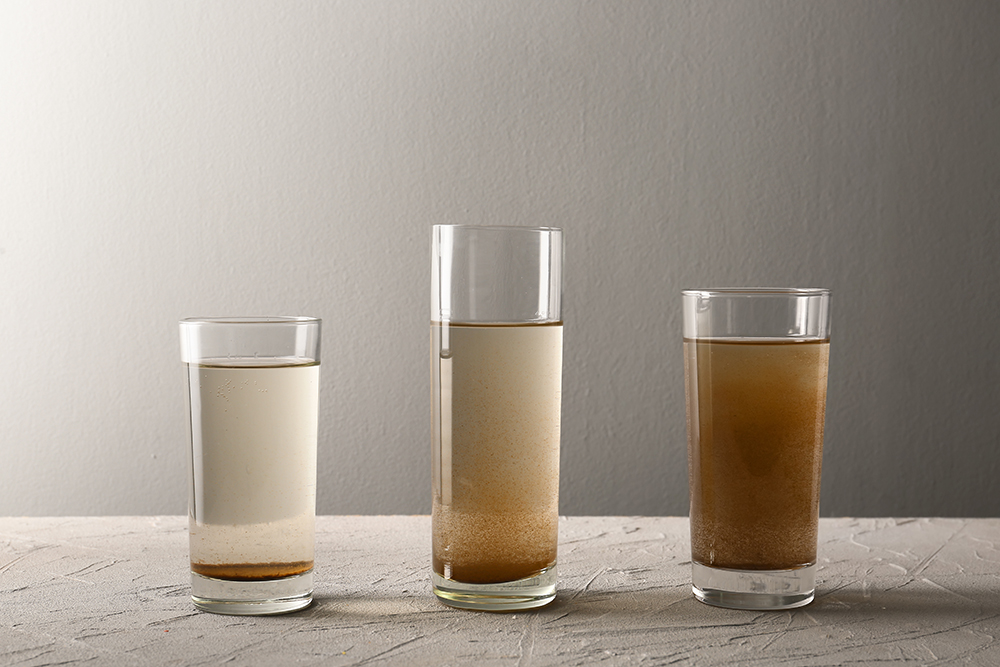Water is a basic necessity of life, but we sometimes take it for granted. Water is not only used to drink and cook, but also in the manufacturing process of many products.
When working in laboratories and hospitals, it’s crucial that any contaminants found in water are removed immediately, before they cause any damage.
Each impurity carries its own risks to chemical and biological research, not to mention the detrimental effect they cause to the quality of pure water. Here we discuss the 8 main types of water contaminants, and how they can be prevented.
1. Microorganisms
The World Health Organization estimates that 1 in 10 people worldwide lack access to safe drinking water. The consequences of this are severe – more than 5 million people die each year from water-related diseases, such as diarrhoea and cholera.
The contamination of water can occur at every step: from its source to the point of distribution and use.
Bacteria, algae and fungi all regularly interfere with sterile research applications. Bacteria can adversely influence cell and tissue culture by competing at enzyme-active sites on substrates.
2. Viruses
Viruses – referred to as non-living nucleic acids – adversely affect tissue and cell growth. They’re extremely small, with most of them falling between 0.01 – 0.3 microns, and they can survive for long periods of time. Once they’ve been spotted in water, they should be removed as soon as possible.
Chlorine is an effective disinfectant that can be used to kill viruses in drinking water sources. However, it doesn’t always work on its own; boiling your water can help kill off any remaining viruses after the chlorine treatment has run its course and benefits of water .
3. Pyrogens
Water is a universal solvent and can dissolve many substances. However, in biological systems, it can also pick up impurities that are detrimental to cell culture.
For mammalian cell cultures, and the preparation of solutions or devices that will later have contact with humans and other mammals, it’s crucial that the water used is pyrogen-free.
The most significant component of pyrogens – a form of endotoxin – is lipopolysaccharides (LPS), which is derived from Gram-negative bacteria walls. If LPS gets into the blood or spinal fluid, it can be toxic and cause a fever.
4. Dissolved Inorganic Ions
There are many impurities in water, such as silicates, chlorides, calcium, fluorides, magnesium, phosphates, bicarbonates, sulphates and nitrates. A high concentration of these ions will result in unstable water which will negatively influence chemical and biological reactions. For example, the formation of protein-protein or protein-lipid interaction alters enzymatic activity and slows down cell growth or tissue development.
5. Dissolved Organic Compounds
In order to understand what causes impurities in water, it is important to first identify exactly what an impurity is. An impurity is any substance that is not water that is found in water. These are derived from animal and plant decay, in addition to any human activities that involve the introduction of alcohol, protein, pesticides, chloramine, herbicides or detergents into the environment.
6. Dissolved Gases
When you are working with water, you need to make sure that it is free from impurities. In this article, we will look at some of the most common impurities in water and their effect on the process.
Water contains naturally dissolved carbon dioxide, nitrogen and oxygen, but these gases can alter the pH of lab water, which upsets the ionic balance. Concentrations of oxygen and nitrogen can affect the rate of biochemical reactions; and high concentration of dissolved gases can cause a bubble formation, which obstructs the flow through chromatography columns and micro-channels.
7. Suspended Particles
When large suspended particles of clay, sand, silt or vegetation between 1 – 10µm are found in water, they cause turbidity and settle at the bottom.
Suspended particles can foul reverse osmosis membranes, filters and chromatography columns, especially if the system stems from a reservoir or tank within the building.
8. Colloidal Particles
Colloidal particles are much smaller than suspended particles, at just 0.01 – 1.0µm, and they don’t settle.
Colloidal particles regularly interfere with analytical techniques, and bypass ion exchange resins, which result in lower resistivity in DI water. They can also be problematic for some applications such as membrane filtration or chromatography.
How to Prevent Contaminants
Reverse osmosis (RO) is hailed as one of the most effective ways of removing contaminants, as this process removes up to 99% of impurities in water. Dissolved organics and ionics, suspended impurities, bacteria and pyrogens are all removed from water when RO is used.
To conclude, contaminants can be very damaging to water. Once found, they should be removed as soon as possible, using the most effective form of water purification technology

